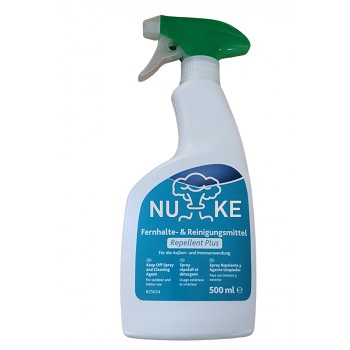Sometimes the mechanics of Aurora introduce some strange observations that are not covered by the mere fluid space explanation.
1
One such oddity is related to the strength of nuclear warheads. Though the extreme endurance of the unknown/untested Duranium and Neutronium materials could wave aside why the hulls can withstand multiple large nuclear impacts, what about the rest of the ship? If any attack manages to get through the hull, even the insides can withstand considerable damage, where for example an 8 HTK engine might just survive a strength-4 10ton missile impact unscathed 50% of the time.(..if 10ton really means 10 ton that is, which is in official position actually vague and more to read as
"for the praxis of spacetravel => 10tons", so not necessarily the same)
More interesting even, the shipboard magazines could be hit and henceforth detonate a whole belly of nukes
inside the ship, and yet, sometimes, -more often with smaller magazines- the ship will still survive.
If those were normal missiles, ok, one could with luck perhaps survive, but the technology text and planetary fallout aftereffects make it very clear on every tech level, that we are dealing with nuclear warheads exclusively.
So if this is not the hull resisting, because there is no hull inside, and we know that the mass of the ship isn't actually wholly transnewtonian, but mostly classical elements, what kind of feng shui magic allows the energy of multiple indoor nukes to be channeled out the air vents to such a degree that the sailors can just end up filing a MSP requisition order to maintenance while continuing on their merry way? Is it nuke repellent spray?

Or perhaps just the will to live?
In a serious way, I could imagine that the fluid space transition that makes those missiles, who can otherwise send whole planets into winters, much less impressive. Perhaps the fluid dimension is just a good shock absorber, though that also raises questions then if lasers too are incredibly high powered, or how massive the gauss and rail projectiles actually are to keep up with the needed violence profile..
..Anyway. Not that I am complaining, because I don't want it changed in any way. This is just about the funny observations that result.
2
Another thing for strategy and exploit that fell in my lap recently. In my current game I am rather cut off from resources outside of Sol and have to somehow subsist against my enemies on the dwindling resource supply there. Most stressing is an Uridium shortage that could actually reign me in over time given that it is used in maintenance constantly.
..Luckily though, I have started with 2+1 friendly NPRs in the same system, who have found the philosophers stone.(..his name is Transnewtonius) Laughing away what is supposed to be total isolating system siege by the invaders, their NPR shipyards operate like a clowncar and have no issue producing around 50 battlecruisers in just a few years each on complete dirth, which they then proceed to occasionally haul against our common enemy. Though the supply isn't very steady, scouring through the resulting wreckage actually now makes up about 70-80% of my nations Uridium income, which lets me participate in their wondrous practice. Praise be Transnewtonius.